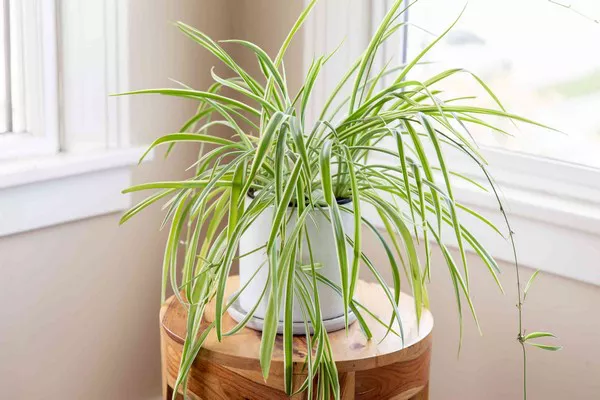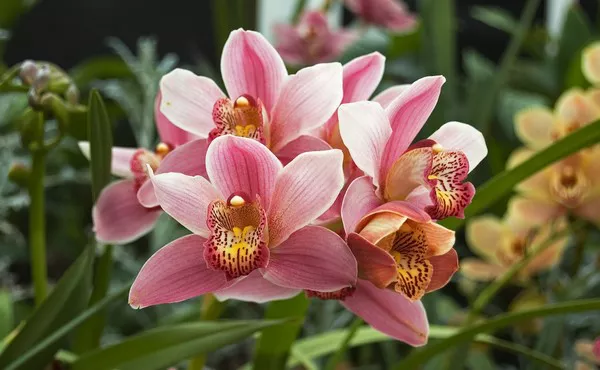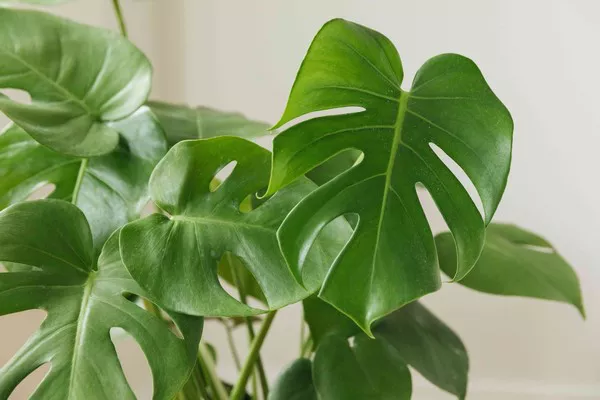Flowers are not only a feast for the eyes, but they also serve as vital components of ecosystems, attracting pollinators and playing crucial roles in plant reproduction. Throughout the world, there are countless species of flowers, each with its own unique traits, adaptations, and beauty. Some flowers stand out for their unusual appearance, fascinating biological features, or cultural significance. In this article, we will explore the top 10 most interesting flowers in the world, highlighting what makes each one extraordinary.
Top 10 Most Interesting Flowers in the World
1. Titan Arum (Amorphophallus titanum) – The Corpse Flower
The Titan Arum, also known as the Corpse Flower, is famous for its overwhelming and unpleasant odor, which resembles that of rotting flesh. This gigantic flower, native to the rainforests of Sumatra, Indonesia, can grow up to 10 feet tall and 3 feet wide. Its pungent smell is not just a random trait; it’s designed to attract pollinators such as carrion beetles and flies that feed on decaying matter. The Corpse Flower only blooms once every few years, making each event a rare spectacle.
Interesting Fact: The Titan Arum holds the title of the largest unbranched inflorescence in the world.
Bloom Time: Once every 7-10 years
Pollinators: Carrion beetles, flies
2. Bleeding Heart (Lamprocapnos spectabilis)
The Bleeding Heart is a delicate, heart-shaped flower native to Asia, including Siberia, China, Korea, and Japan. Its unique pink or white petals hang like pendants, with a small droplet at the tip, resembling a bleeding heart. This flower blooms in the spring and is often found in shade gardens due to its preference for cool, moist environments. Its stunning shape and bright colors have made it a favorite ornamental plant around the world.
Interesting Fact: The flower is known for its “locket” appearance and is often associated with love and compassion.
Bloom Time: Spring to early summer
Pollinators: Bees, butterflies
3. Passion Flower (Passiflora)
The Passion Flower is an exotic and intricate bloom found in tropical and subtropical regions, including South America, Southeast Asia, and parts of North America. This vine-like plant is known for its strikingly complex structure, with layers of colorful petals, a central crown, and unique reproductive organs. The Passion Flower has historical significance in Christian symbolism, with its parts representing different aspects of the crucifixion of Christ.
Interesting Fact: The flower’s name derives from its association with the Passion of Christ in Christian theology.
Bloom Time: Late spring to autumn
Pollinators: Bees, hummingbirds, bats
See Also: Top 10 Most Popular Flowers to Grow in the World
4. Ghost Orchid (Dendrophylax lindenii)
The Ghost Orchid is an elusive and rare flower found in the wetlands of Florida and parts of Cuba. This epiphytic orchid has no leaves and relies entirely on its roots and stems for photosynthesis. Its delicate white flowers appear to “float” in mid-air, giving it a ghostly appearance, hence its name. The Ghost Orchid is notoriously difficult to grow in cultivation, making it highly sought after by orchid enthusiasts and botanists.
Interesting Fact: The Ghost Orchid has become famous due to its mention in the novel “The Orchid Thief” and the film “Adaptation.”
Bloom Time: Late spring to mid-summer
Pollinators: Moths, specifically the giant sphinx moth
5. Corpse Lily (Rafflesia arnoldii)
The Corpse Lily, like the Titan Arum, is known for its repulsive odor. However, it differs in appearance and biological function. Found in the rainforests of Southeast Asia, particularly in Borneo and Sumatra, this parasitic plant lacks leaves, stems, or roots and grows directly on its host plant. The Corpse Lily produces the largest individual flower in the world, which can grow up to 3 feet in diameter and weigh up to 15 pounds.
Interesting Fact: The flower has no chlorophyll and is entirely dependent on its host for nutrients.
Bloom Time: Unpredictable; blooms last only a few days
Pollinators: Flies attracted by its foul smell
6. Chocolate Cosmos (Cosmos atrosanguineus)
The Chocolate Cosmos is a unique and rare flower native to Mexico. As its name suggests, this dark maroon flower emits a sweet chocolate fragrance, making it particularly appealing to flower enthusiasts. Though now extinct in the wild, it is cultivated in gardens around the world. The flower’s deep color and cocoa scent make it one of the most intriguing flowers in the botanical world.
Interesting Fact: The Chocolate Cosmos is propagated through cloning, as it no longer produces viable seeds.
Bloom Time: Late summer to autumn
Pollinators: Butterflies, bees
7. Snapdragon (Antirrhinum)
The Snapdragon is a well-known garden flower that has fascinated people with its peculiar shape and the way it reacts to touch. When squeezed, the flowers resemble a dragon’s mouth opening and closing, hence the name “snapdragon.” Native to the Mediterranean region, this plant comes in various vibrant colors, including pink, yellow, red, and white. In folklore, snapdragons are believed to offer protection against curses and symbolize strength and grace.
Interesting Fact: Snapdragons have been used historically in cosmetics and herbal medicine.
Bloom Time: Late spring to autumn
Pollinators: Bees, especially bumblebees
See Also: Top 10 Best Spring Plants for Bees in the World
8. Middlemist’s Red (Camellia)
The Middlemist’s Red is one of the rarest flowers in the world, with only two known specimens in existence: one in New Zealand and the other in the UK. This vibrant red flower is actually a type of camellia, and it was brought to Britain from China in 1804 by botanist John Middlemist. Over the centuries, it has vanished from the wild, leaving only the cultivated specimens behind.
Interesting Fact: Despite its name, the flower can also bloom in shades of pink.
Bloom Time: Spring
Pollinators: Bees, flies
9. Jade Vine (Strongylodon macrobotrys)
The Jade Vine, native to the rainforests of the Philippines, is an exotic and eye-catching plant known for its spectacular turquoise-colored, claw-shaped flowers. The vine can grow up to 18 meters long, and its striking blooms dangle in clusters, creating a captivating display. The unusual color of the flowers, along with their scarcity in the wild due to habitat loss, makes the Jade Vine one of the most fascinating and rare plants.
Interesting Fact: The color of the Jade Vine’s flowers can range from blue-green to mint-green depending on light conditions.
Bloom Time: Spring and summer
Pollinators: Bats
10. Hydnora africana
The Hydnora africana is a parasitic plant native to southern Africa that spends most of its life underground, except for its bizarre flower. This plant lacks chlorophyll and survives by attaching itself to the roots of its host plants. The flower resembles a fleshy, closed trap that emits a foul odor to attract dung beetles and other pollinators. Once pollinated, the flower closes around the insects, keeping them trapped inside for a few days before releasing them.
Interesting Fact: Hydnora africana is sometimes called the “monster flower” due to its unusual appearance.
Bloom Time: Sporadic, often after rain
Pollinators: Dung beetles
Conclusion
The world of flowers is as diverse as it is beautiful, and the flowers highlighted in this article represent some of the most interesting and unique examples of floral wonders. From the colossal Titan Arum to the rare and delicate Middlemist’s Red, these plants captivate not only because of their beauty but also because of the unusual ways in which they have adapted to survive and reproduce. Protecting these fascinating species and their habitats is crucial to preserving the incredible diversity of life on Earth.
You Might Be Interested In:



![10 Most Richest Cities in the United States [Revealed!]](https://www.validdownloads.com/wp-content/uploads/2023/12/Manjula-Pothos.webp)




















